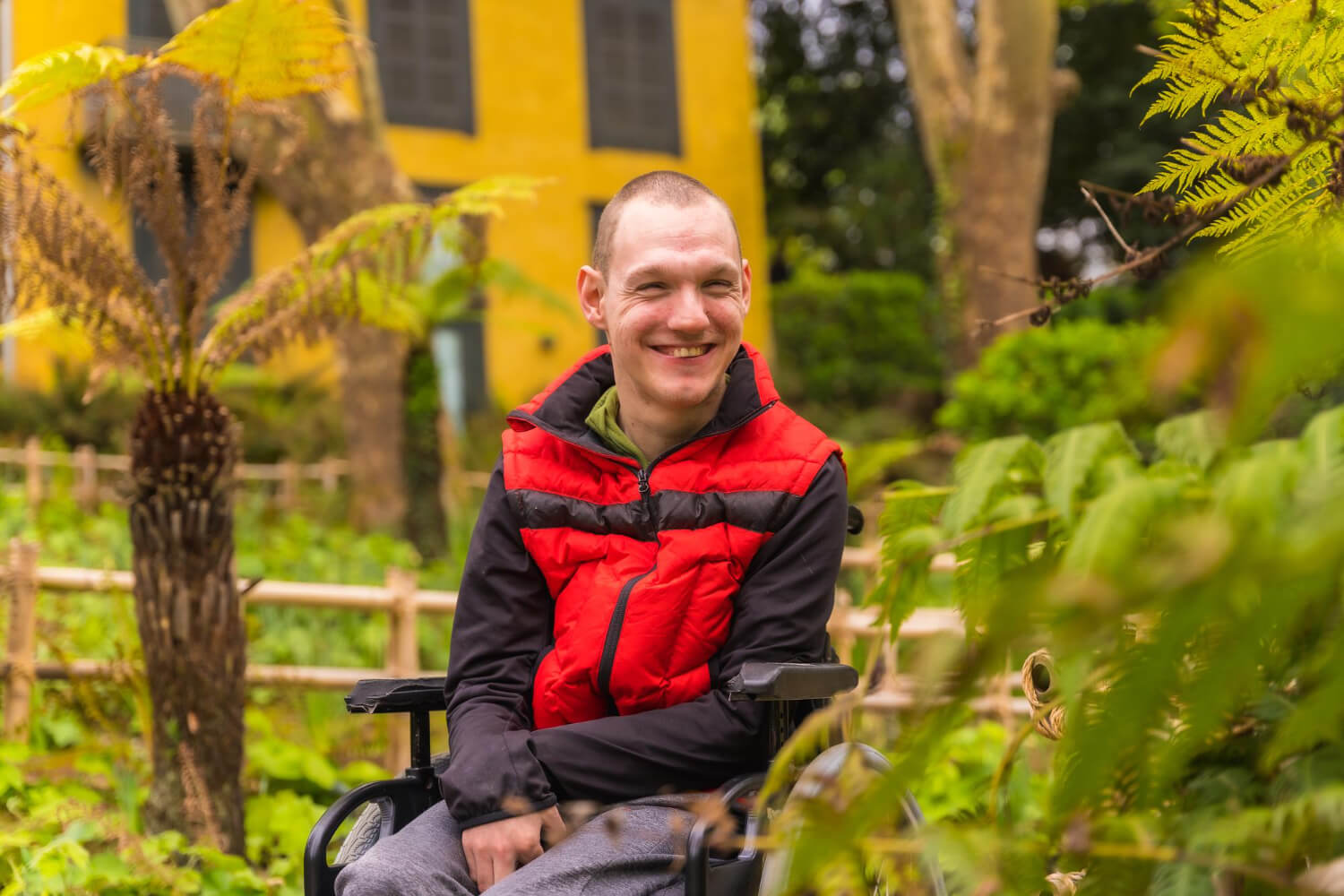Respite care is short-term support that gives a break to the primary carer of a person with a disability. It allows carers to take time off—whether for a few hours, a weekend, or longer—while the person they support continues to receive the care they need in a safe and supportive environment.
Respite can happen at home, in a community setting, or in dedicated short-term accommodation. It may involve personal care, assistance with daily living tasks, and opportunities to take part in social or recreational activities. For the person with a disability, respite can be a positive experience—providing a change of scenery, new routines, and the chance to meet new people.
It’s important to understand that respite isn’t just about taking a break—it’s also about maintaining wellbeing. Regular, planned breaks can prevent stress and burnout for carers while helping participants build confidence, independence, and social connections outside their usual support network.
Under the NDIS, respite is commonly called Short Term Accommodation (STA), and it can be funded when it’s considered reasonable and necessary for the participant’s needs.
Related: How Much Does Respite Care Cost Per Day in Australia?
How Does Respite Work Under the NDIS?

In the NDIS, respite care is generally provided as Short Term Accommodation (STA). This funding allows carers to take a break while the participant continues receiving safe and reliable support.
What does STA include?
- Accommodation in a supported setting
- Personal care, such as help with daily tasks
- Meals and food preparation
- Support staff available throughout the stay
- Community or recreational activities suited to the participant
Participants may use STA for:
- A planned break for both themselves and their carer
- Temporary care during family emergencies or hospital stays
- Time away to build independence and try new experiences
STA is typically funded for up to 28 days per year, which can be used flexibly. Participants can choose to use these days as single nights, weekends, or short blocks depending on their needs.
What STA May Cover
| Item | Included in STA |
|---|---|
| Accommodation | Yes |
| Meals and food | Yes |
| 24-hour support staff | Yes |
| Travel to and from respite | No* |
| Therapy or medical services | No* |
* Travel and clinical services are only included when directly related to the NDIS goals or agreed in the plan.
Who can access STA funding?
To access STA, the participant usually needs Core Supports funding in their plan. STA can be accessed by:
- Plan-managed participants
- Self-managed participants
- Agency-managed participants (must use registered providers)
When is STA considered reasonable and necessary?
The NDIS may fund respite when it:
- Supports the ongoing sustainability of informal care
- Builds the participant’s capacity and independence
- Aligns with the goals outlined in the plan
Having STA in place offers reassurance for both participants and carers. It ensures support continues even during times of change, stress, or transition.
Related: Who Is Eligible for NDIS Respite Care?
Benefits of Respite for Participants

Respite care offers more than just time away from home—it provides participants with new opportunities for growth, connection, and independence. When delivered through Short Term Accommodation, respite is designed to meet everyday needs while also offering a fresh experience.
Key benefits for NDIS participants include:
- Trying new activities in a supported environment
- Meeting new people and forming social connections
- Building independence by staying away from home with support
- Experiencing different routines, places, and carers
- Practising skills like self-care, communication, and decision-making
Many participants find respite to be a valuable step toward long-term goals, such as transitioning to supported accommodation, improving social confidence, or learning how to manage daily routines without family support.
Examples of Respite Experiences
| Participant Goal | How Respite Helps |
|---|---|
| Build confidence outside the home | Safe overnight stays with trained staff |
| Learn new skills | Structured activities like cooking or cleaning |
| Social connection | Group-based respite options with peer interaction |
| Improve daily routines | Support with morning and evening tasks |
Respite also gives participants the chance to explore their preferences. For some, it may be the first time spending a night away from their regular carers. For others, it’s a step toward living more independently.
Importantly, respite is tailored. Providers work with participants and their support networks to make sure everything—from food and activities to bedtime routines—is suited to the person’s comfort and support needs.
Participants often return from respite with a stronger sense of autonomy, improved social confidence, and new experiences they can build on in future.
Benefits of Respite for Carers
Respite isn’t only valuable for participants—it’s essential for carers. Providing full-time support to a person with disability is a long-term responsibility, and even the most dedicated carers need regular breaks to protect their own health and wellbeing.
Key benefits of respite care for carers include:
- Time to rest and recharge, reducing physical and emotional strain
- Flexibility to attend to personal needs, such as work, medical appointments, or family commitments
- Peace of mind, knowing the participant is safe and supported
- Improved sustainability of the caring relationship over time
- Reduced risk of burnout, stress, or carer fatigue
Without regular breaks, carers may experience isolation, exhaustion, or declining health—all of which can affect the quality of care they provide. Respite helps prevent this by creating space to reset, focus on self-care, and maintain balance in other areas of life.
Common Reasons Carers Use Respite
| Reason | How Respite Helps |
|---|---|
| Need for rest or sleep | Overnight stays provide uninterrupted rest |
| Attending personal or medical matters | Carers can manage their own appointments |
| Travel or family emergencies | Respite offers temporary coverage |
| Preventing stress and exhaustion | Regular breaks support mental wellbeing |
Respite also strengthens long-term care relationships. Time apart can lead to better communication, renewed patience, and appreciation on both sides. It allows carers to return to their role with more energy, focus, and emotional resilience.
Importantly, respite supports both sides of the caring relationship. When carers feel supported and refreshed, the person receiving care benefits too. This balance leads to safer, healthier, and more sustainable care over time.
Types of Respite Services Available

Respite care under the NDIS can be delivered in a variety of settings, depending on the participant’s needs, preferences, and level of support required. Each type of respite service offers different benefits, and participants can choose the option that works best for them and their carers.
Common types of respite include:
- In-home respite: A support worker comes to the participant’s home, providing care while the primary carer takes a break. This option is ideal for those who feel most comfortable in familiar surroundings.
- Centre-based or community respite: Participants attend a local centre or community facility where they take part in structured activities. These may include games, outings, cooking, or creative projects, often in a group setting.
- Short Term Accommodation (STA): Overnight or weekend stays in a fully supported environment with staff available 24/7. STA may be in a house, unit, or other setting designed to feel safe and comfortable for participants.
- Emergency respite: Provided on short notice when a carer is suddenly unavailable due to illness, crisis, or unexpected events. Emergency respite ensures continuity of care during urgent situations.
- Group respite: Participants stay or spend time with others who have similar interests or support needs. This is often used to encourage social interaction and peer relationships.
Comparison of Respite Types
| Type of Respite | Location | Duration | Best For |
|---|---|---|---|
| In-home respite | Participant’s home | Few hours to full day | Carers needing short breaks at home |
| Centre-based respite | Community centre | Day programs | Social connection and activities |
| Short Term Accommodation | Respite house/unit | Overnight to 14 days | Overnight care or extended support |
| Emergency respite | Varies | As needed | Unexpected carer absence or emergencies |
| Group respite | Shared settings | Hours to days | Socialising with others in supported care |
All respite types must meet the participant’s support needs, comfort level, and goals. Many providers, including SS Disability Care, offer flexible arrangements and work closely with families to ensure the experience is safe, respectful, and positive for everyone involved.
Who Can Access Respite Through the NDIS?
Respite care is available to many NDIS participants, but it must meet the criteria of being reasonable and necessary. If it supports your goals, helps maintain informal care relationships, and contributes to long-term independence or wellbeing, it can often be included in your plan.
You may be able to access NDIS-funded respite if:
- You have an NDIS plan with Core Supports funding
- You are plan-managed, self-managed, or NDIA-managed
- You require short-term support to give your carer a break
- You are working towards goals around independence, social connection, or community access
Respite is typically included under the Assistance with Daily Life category within Core Supports. If it’s already in your plan, you can use it to access Short Term Accommodation (STA) and other respite services. If it’s not yet included, it can be requested during your next plan review.
Who Approves Respite Funding?
| Participant Type | Can Access Respite? | Conditions |
|---|---|---|
| Plan-managed | Yes | Can use any registered/unregistered provider |
| Self-managed | Yes | Full flexibility to choose provider |
| NDIA-managed | Yes | Must use NDIS-registered providers |
When might respite be approved?
Respite may be funded when it:
- Supports an informal carer in their ongoing role
- Helps a participant build confidence or routines outside the home
- Prepares the participant for independent living
- Supports access to the community or new activities
- Offers a safe alternative during emergency or crisis situations
If your caring arrangement is a key part of your support network, the NDIS considers it important to keep that relationship strong. That’s why respite—particularly Short Term Accommodation—can play a key role in making your support network more sustainable.
If you’re unsure whether you qualify for respite, speak with your Support Coordinator, Local Area Coordinator (LAC), or planner. They can help clarify your eligibility and assist in preparing the necessary information for your next plan review.
How to Include Respite in Your NDIS Plan
To access respite through the NDIS, you need to have it included in your plan under the right category—usually Core Supports, listed as Assistance with Daily Life. The best time to request this funding is during your initial planning meeting or a scheduled plan review.
To include respite in your plan, you’ll need to:
- Explain why respite is needed—for example, to maintain informal supports or prevent carer fatigue
- Show how respite supports your goals—such as building independence, trying new routines, or staying socially connected
- Provide evidence or supporting documents, if available—like letters from a GP, support worker, or therapist
The NDIS funds supports that are considered reasonable and necessary, so linking respite to your functional needs and overall wellbeing is key.
What to Prepare for a Planning or Review Meeting
| Item | Purpose |
|---|---|
| A clear goal (e.g. build independence) | Shows how respite contributes to outcomes |
| A written carer statement | Outlines the importance of breaks and sustainability |
| Therapist or GP letter | Confirms need for short-term support |
| Previous respite experience | Demonstrates past benefits and outcomes |
| Description of care routine | Shows the level of informal support provided |
Tip: If you’re already receiving informal care from a family member or friend, explain how respite supports that relationship. The NDIS recognises the value of informal supports, and may fund respite to help sustain them over time.
How to request respite funding:
- Speak to your Local Area Coordinator (LAC)
- Talk with your Support Coordinator (if you have one)
- Raise it directly during your next plan review meeting
Make it clear that respite is part of your support strategy—not just a break, but a structured support that helps you and your carer stay well. With strong reasoning and clear links to your goals, respite is often approved as part of a well-rounded NDIS plan.
Choosing a Respite Provider
Choosing the right respite provider ensures the experience is safe, comfortable, and genuinely helpful—for both the participant and their carer. A good provider will take the time to understand the participant’s needs, routines, preferences, and goals before delivering any support.
When comparing respite providers, consider the following:
- Are they experienced in delivering NDIS-funded respite services?
- Do they support your preferred type of respite? (e.g. in-home, STA, community-based)
- Is their staff trained and qualified to meet your specific care needs?
- Can they accommodate your usual routines, meals, mobility, and personal care requirements?
- Are they flexible with timing and duration of stays?
It’s also worth asking whether they can manage changes in routine, behaviours of concern, or complex health conditions if relevant to the participant.
Questions to Ask a Respite Provider
| Question | Why It Matters |
|---|---|
| What types of respite do you provide? | Ensures they offer the right kind of support |
| Can we visit or meet the support staff first? | Helps build trust and confidence before the stay |
| Do you personalise support to individual needs? | Ensures routines, preferences, and comfort are respected |
| How are meals, medication, and care handled? | Confirms health and wellbeing needs are met safely |
| Are activities included during the stay? | Encourages participation, socialising, and engagement |
You can also look for feedback or reviews, speak with other participants, or ask the provider for examples of how they’ve supported clients with similar needs.
If you’re plan-managed or self-managed, you have full choice over your provider. If your plan is agency-managed, make sure the provider is NDIS-registered.
A good respite provider will always:
- Take time to understand what matters to you
- Communicate clearly and involve you in planning
- Create a safe, respectful, and welcoming environment
- Support you in achieving your NDIS goals
Finding the right fit can make a big difference. Respite should never feel like a disruption—it should feel like a positive, empowering part of your broader NDIS supports.
Conclusion
Respite care plays a vital role in the lives of both NDIS participants and their carers. It’s more than just a break—it’s a way to strengthen support networks, improve wellbeing, and build greater independence. Whether delivered at home, in a supported setting, or through Short Term Accommodation, respite offers the flexibility and reassurance many families need.
For participants, respite is a chance to try new things, meet new people, and explore life outside their usual routine. For carers, it’s an essential opportunity to rest, recover, and continue providing care without reaching burnout.
Through the NDIS, respite can be funded when it’s considered reasonable and necessary. Including it in your plan starts with understanding how it connects to your goals and being prepared to talk about why it matters.
At SS Disability Care, we’re here to make respite simple, safe, and suited to you. Whether you’re planning ahead or responding to a change in your circumstances, we’ll work with you to create respite experiences that support your daily life and long-term wellbeing.
Need help accessing or arranging NDIS respite on the Gold Coast?
Contact SS Disability Care to discuss your needs and explore your options.
